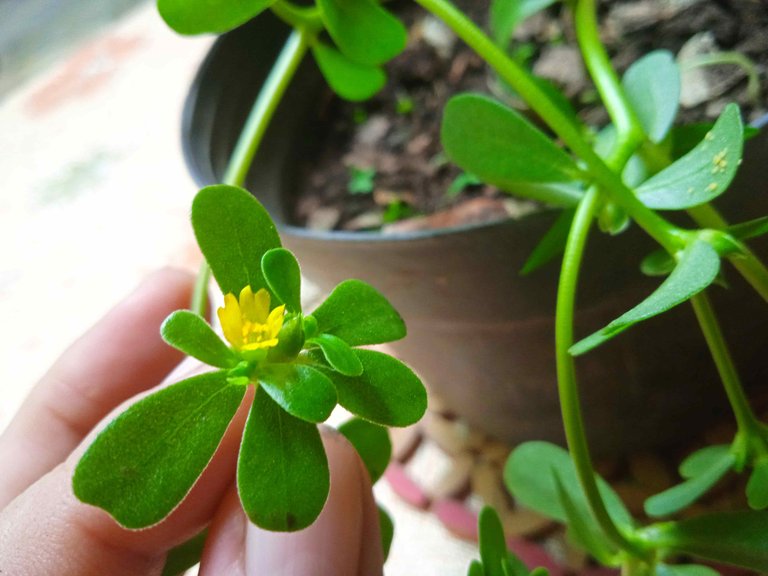
Greetings on this beautiful Sunday, especially to the members of this nice Succulent Growers community run by @nikv. This is the first time I have shared a post here, and I hope everyone likes it.
Saludos en este bonito domingo, especialmente a los miembros de esta agradable comunidad Succulent Growers a cargo de @nikv. Esta es la primera vez que comparto aquí una publicación, y espero que ésta sea del agrado de todos.

Para ser franca, no tengo muchas suculentas, quizás cuatro, específicamente quelites, sin embargo, en mi juventud solía coleccionar cactus, aunque luego de una mudanza los regalé todos, ya que no podía llevarlos conmigo. Hace unas tres semanas, en una de mis salidas al solar, pude observar una pequeña plantita de verdolaga (Portulaca oleracea), que crecía a un lado del camino. Me pareció extraño, ya que las plantas que tuve tiempo atrás, fueron literalmente exterminadas por las tortugas de tierra que habitan este espacio; aun así, la pude ver, pequeñita, solitaria, y decidí trasplantarla a unas macetas, así que la recogí y dividí y separé una ramita de ella.
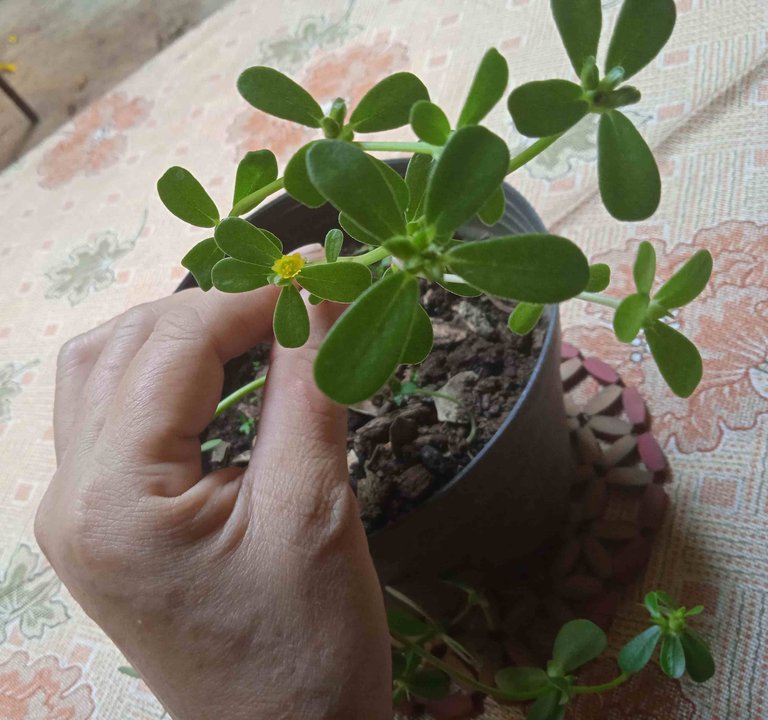

Esta planta es muy común en mi país, Venezuela, y creo que también en muchos otros países tropicales. Generalmente se utiliza para cubrir áreas de suelo pobre, porque es una planta resistente, que tiene pocos requerimientos edáficos. También se emplea como alimento para las tortugas de tierra (morrocoyes), las cuales son mascotas habituales en mi cultura. Igualmente tiene usos medicinales, pues dentro de la medicina tradicional, se considera ideal para oxigenar el cerebro. Recuerdo que una de mis tías hacía un jugo verde con ella, no obstante, es una planta que debe consumirse con mucho cuidado, porque puede dañar los riñones ya que, como los quelites, contiene elevados niveles de ácido oxálico, el cual puede eliminarse en gran parte mediante cocción.
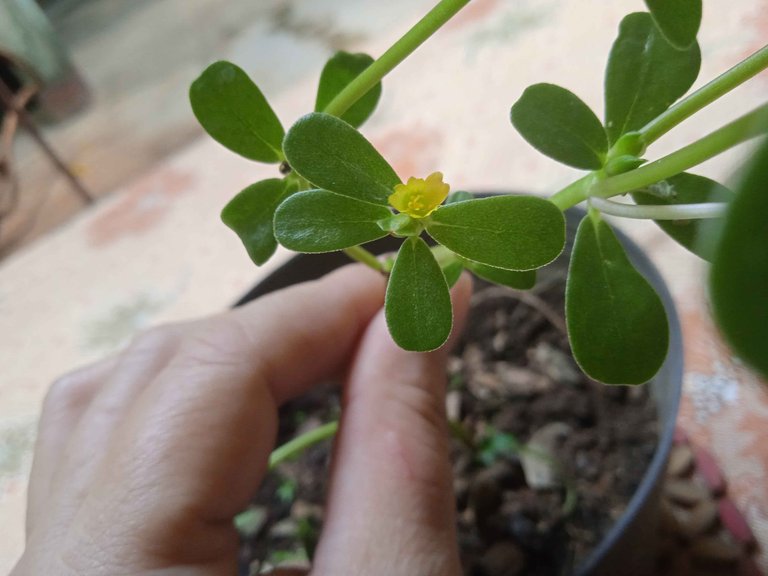

Este ejemplar que les comparto, surgió a partir de una pequeña ramita de escasos 8 centímetros. La sembré en esta maceta, y a los tres días la coloqué al sol. En tres semanas ha crecido, e incluso ha florecido, y aunque sus flores son pequeñas y tímidas, son bonitas. Mi intención es que siga fortaleciéndose y expandiéndose, para poder usarla en mis ensaladas, y ocasionalmente en algún batido verde. También es una forma de ofrecer diferentes fuentes de alimento a las pequeñas colmenas de meliponas que están en el jardín interno, aunque no creo que esta sea una planta melífera por excelencia.
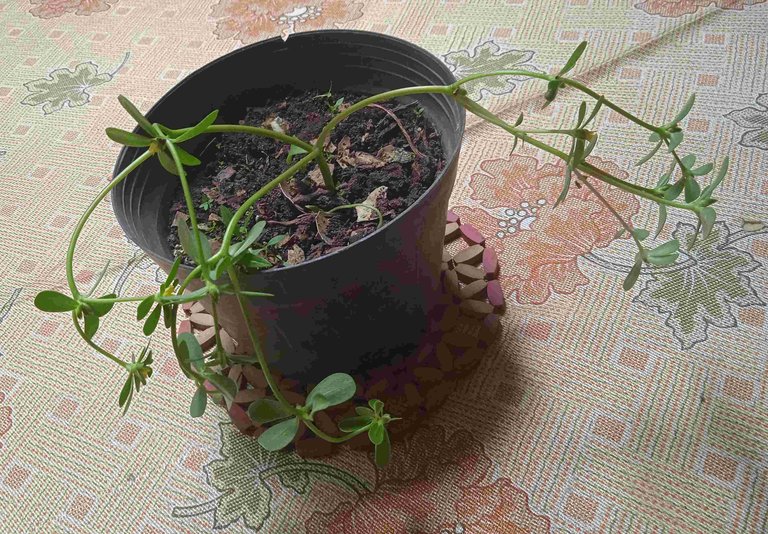

It is a ruderal plant, that is, it grows in very poor soils, as I noted previously.
It has a very special metabolism, which allows it to do both types of photosynthesis, so day and night it is doing this process.
- It is the plant that has the greatest amount of Omega 3, so it is very beneficial for health.
- Provides vitamins C and B. It also provides magnesium, calcium, potassium, iron.
- Provides two types of very powerful antioxidants, ideal for preventing brain deterioration and the cancer.
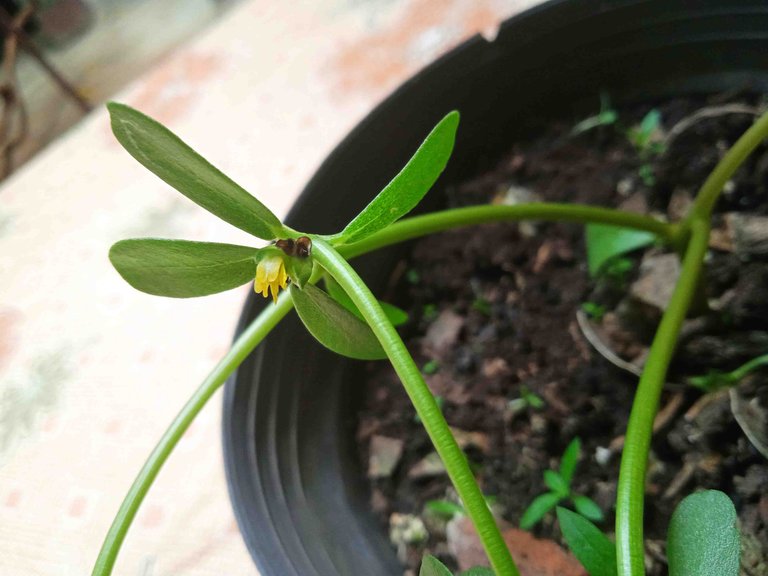
Esta es una planta común, humilde, pero con mucha importancia (al igual que cualquier otra planta en la naturaleza). Según la revisión bibliográfica que hice, pude encontrar los siguientes rasgos, que considero importante conocer:
Es una planta ruderal, es decir, que crece en suelos muy pobres, tal como señalé previamente.
Tiene un metabolismo muy especial, que le permite hacer los dos tipos de fotosíntesis, por lo que día y noche está haciendo este proceso.
- Es la planta que tiene mayor cantidad de Omega 3, por lo que es muy beneficiosa para la salud.
- Aporta vitaminas C y B. También aporta magnesio, calcio, potasio, hierro.
- Aporta dos tipos de antioxidantes muy potentes, ideales para prevenir el deterioro del cerebro y el cáncer.

Aquí termino mi post de hoy, en el que les he compartido las imágenes de una humilde pero valiosa planta, que más allá de ser una yerba mala, es muy beneficiosa para la salud humana. Me despido de ustedes y, recuerden: No todos los días son iguales y más importante aún: Todo lo que das, todo lo que haces, inexorablemente volverá a ti. ¡Abrazos!



Todo el contenido, (excepto los separadores de texto) es de mi propiedad y está sujeto a derechos de autor // All content (except text dividers) is my property and is subject to copyright.




Delegations welcome!

Posted Using InLeo Alpha